It has been ten years since the Bear Sanctuary Prishtina rescued its first bear, Kassandra, from a small cage of a restaurant in Suhareke. Kassandra and another 19 bears now enjoy freedom in the Sanctuary.
On Saturday, the Bear Sanctuary Prishtina celebrated the 10th anniversary of its first bear rescue. On this occasion, the Bear Sanctuary Prishtina organised a visit to Duhle Pass [Qafa e Duhles] where they rescued their first animal: Kassandra. This was an opportunity to tell her story again.
For 11 years, the female bear lived in an iron cage of about 6 square metres. “It’s like the size of a bathroom,” says Taulant Hoxha, Tourism Development and Communication Manager of the Prishtina Bear Sanctuary.
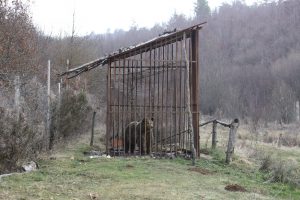
Dulje Pass, Suhareka, Kosovo, January 13, 2011. Former keeping condition of brown bear Kassandra at ‘Gjeraqina’ Restaurant in Dulje Pass.
She was kept there as an attraction for the nearby restaurant customers, located along what was then the main road between Prishtina and Prizren. The owners used Kassandra to attract visitors.
A healthy bear could probably have destroyed the small cage. But Kassandra, who was fed mainly bread and was constantly exposed to rain, snow, and sun, could not find that strength. She did try to dig into one of the corners of the cage, but it wasn’t enough to get under the grate.
When the restaurant closed in 2012, Kassandra was left behind in her cage. For more than a year, she was fed only by locals. “She continued to be mistreated by people coming towards her with their dogs, making noise or throwing stones, which caused her a lot of stress,” explains Afrim Mahmuti, the Executive Director of the Bear Sanctuary Prishtina. Her situation was eventually reported by locals and the Austrian KFOR troops.
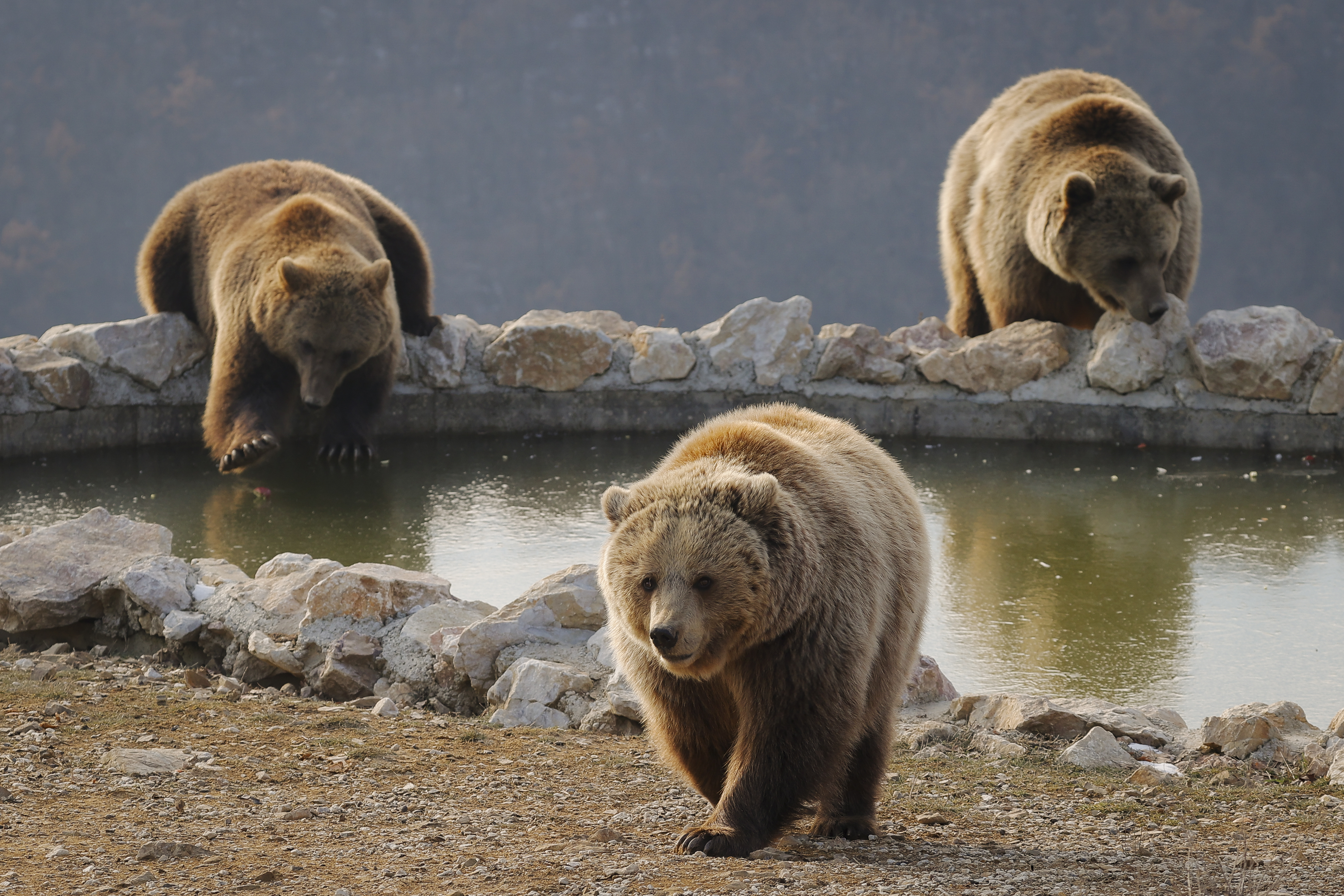
Brown bears walk in a bear sanctuary near the village of Mramor, Kosovo, 22 December 2021. The Bear Sanctuary Prishtina has rescued bears from private restaurants around Kosovo and Albania. All privately kept brown bears lived in small cages at restaurants. They were born mostly in the forests of Kosovo or Albania and snatched from their mothers by animal dealers. Photo: EPA-EFE/VALDRIN XHEMAJ
Mahmuti was present the day that the Ministry of Environment, supported by the police and Four Paws, intervened to save the bear. He recalls, “it happened on 16 March, in freezing temperatures. The owner was there. He protested for two or three hours, saying he was an animal lover and asking for compensation.”
To get her out of her cage, Kassandra had to be anaesthetised. She was then transported by truck to the sanctuary, which was still under construction at the time. “The bear house was not finished and, for a while, one of the workers slept in the cage opposite,” reflects Afrim Mahumuti.
Kassandra remains a symbol for the Bear Sanctuary Prishtina.
It took at least three weeks for Kassandra to feel confident enough to get out and walk on the grass. Ten years later, the 22-year-old bear is in much better condition: she is fed with appropriate food and has plenty of space to roam. She has even befriended Vini, the other bear that shares her enclosure, and has discovered natural behaviours such as hibernation.
But, unlike some of her fellow bears in the sanctuary, she remains very shy, and visitors are unlikely to see her. “We checked her enclosure recently with a drone, but we haven’t seen her yet,” says Taulant Hoxha.
As the first bear to be rescued, Kassandra remains a symbol for the Bear Sanctuary Prishtina. Her rescue marked the beginning of a decade of work on animal rights and protection.
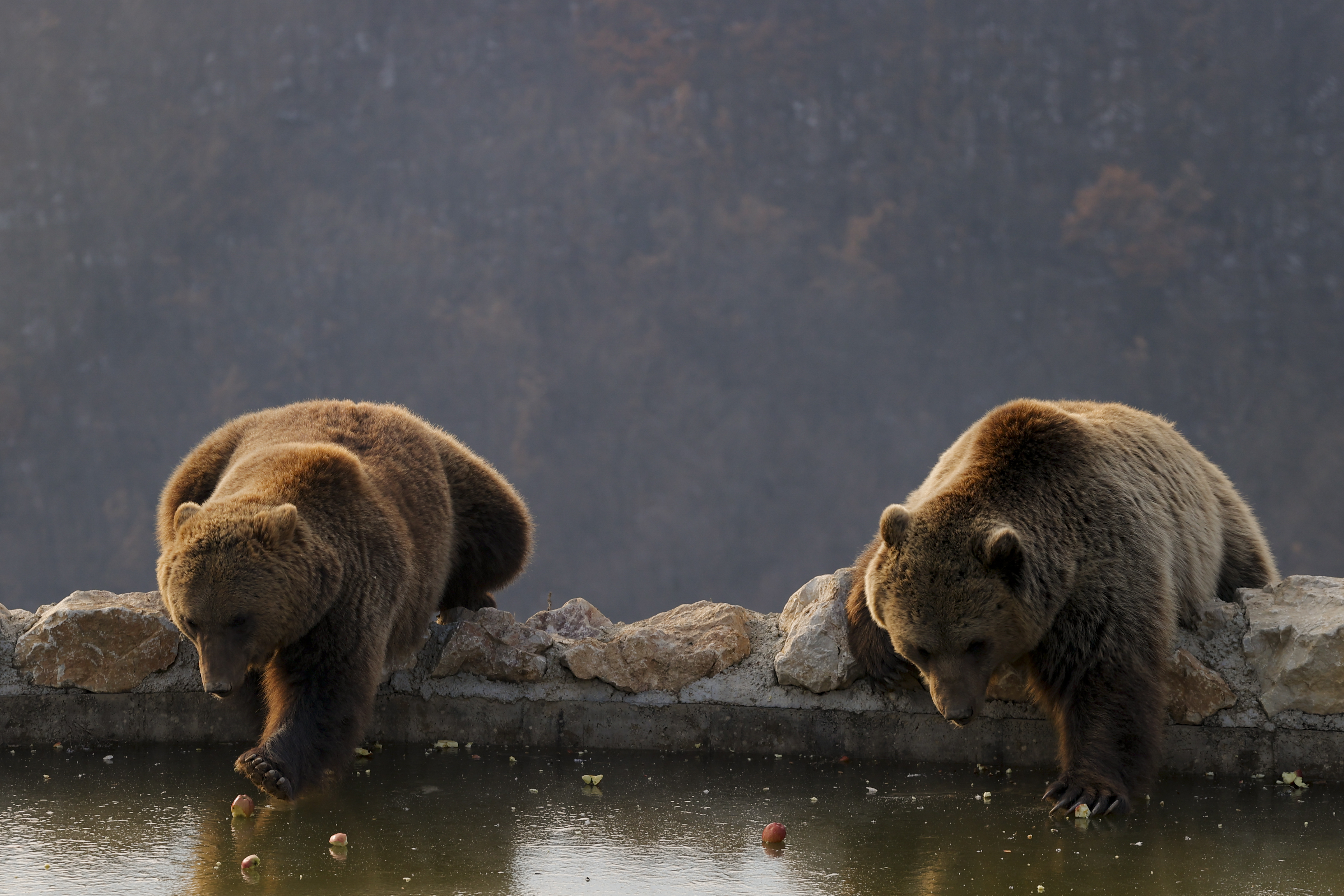
Brown bears catch apples from the iced surface of a little pond in a bear sanctuary near the village of Mramor, Kosovo, 22 December 2021. Photo: EPA-EFE/VALDRIN XHEMAJ
A Decade of work at the Bear Sanctuary
Since Kassandra’s rescue in March 2013, the Bear Sanctuary Prishtina has rescued another 19 bears and one lion. Today, the Bear Sanctuary welcomes more than 40,000 visitors per year.
“In a country where you have an infinite list of issues, this feels like something that is going right,” says Hoxha.
In 2010 Kosovo made it illegal to keep bears privately. However, this did not solve the problem of what to do with the bears like Kassandra already in private homes or restaurants.
Bears raised in captivity cannot be released into the wild because they do not know how to hunt, hibernate, or protect themselves.
Construction of the sanctuary to house bears rescued from private homes and restaurants began in 2012 in partnership with Four Paws International, a global animal welfare organisation with several large animal sanctuaries. After rescuing Kassandra and several other restaurant bears in spring 2013, the Prishtina Bear Sanctuary officially opened for visitors in May 2013.
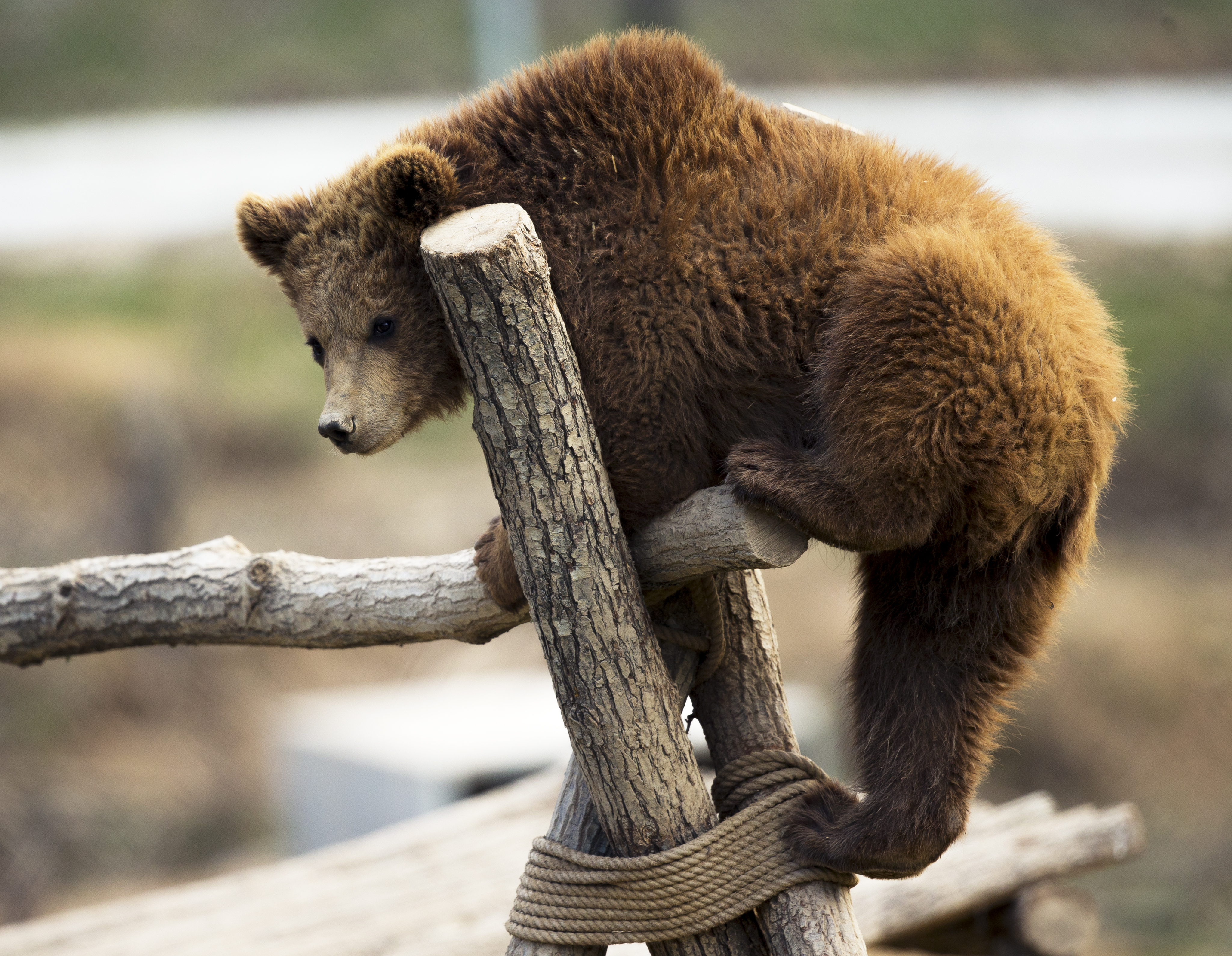
Brown bear Ema plays in a bear sanctuary near the village of Mramor, Kosovo, 18 March 2015. Photo: EPA/VALDRIN XHEMAJ
The most recent bear rescue took place in 2019, when Four Paws discovered that a national park ranger was keeping a bear cub in his basement. The sanctuary people are hopeful that there are no more bears in captivity in Kosovo.
The goal of the sanctuary is to “rescue them, give them a better space, a better life, and proper care,” says Taulant Hoxha. All bears are taken care of by animal experts, who carefully tailor behavioural enrichment programs to individual bears’ needs.
The sanctuary is also focused on animal rights advocacy and education. They have led several successful campaigns to inform the public that the practice of keeping bears as forms of entertainment in restaurants or as private pets is wrong.
Hoxha says that the Bear Sanctuary’s main message is: “Wild animals belong in the wild”.
Wildlife protection means not harming wild animals, but also not harming the environment that they live in. Education helps ensure that future generations will respect wild animals and their habitats.
The Bear Sanctuary hosts many field trip visits from primary schools around Kosovo and Albania to teach children about the importance of environmental conservation. In the coming years, the Bear Sanctuary plans to expand its hands-on educational programming.
Despite all of its progress, the sanctuary still encounters some hurdles. Kosovo’s unrecognised status interferes with the work of the Bear Sanctuary. Because Kosovo is not a member of the UN, it is not a party to the UN Convention on Animal Health Protection or a member of the World Organization for Animal Health, and has not signed CITES [Convention on International Trade in Endangered Species].
Therefore, Kosovo cannot accept or transport large animals. This political complication explains why the Bear Sanctuary is currently home to a lion. The lion was kept in a restaurant, somewhere in Kosovo. Although Kosovo’s climate is not appropriate for a lion, the lion cannot be transferred due to international regulations. The sanctuary continues to search for a better solution.
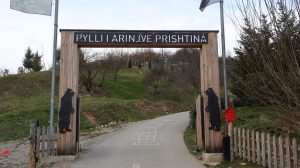
The entrance of the Bear Sanctuary, March 2023. Photo: Kylie Henry/Prishtina Insight
Visit the sanctuary
Located 20 km from Prishtina, the Bear Sanctuary is currently open daily from 10:00 – 16:00. From April to October, the Sanctuary will be open from 10:00 – 19:00.
The sanctuary is family-friendly and offers several youth activities, including a maze, playground, and treasure hunt. The Thesaret e Natyrës restaurant at the sanctuary serves a vegetarian-friendly menu.
The sanctuary allows visitors to safely observe the bears in their natural habitat. Signs in Albanian and English are found at each enclosure, informing visitors of the name and story of every bear at the sanctuary.
Although the rescued bears can never be returned to the wild, they enjoy lots of space and wilderness in their large enclosures. They will spend the rest of their lives comfortably at the Bear Sanctuary Prishtina.





